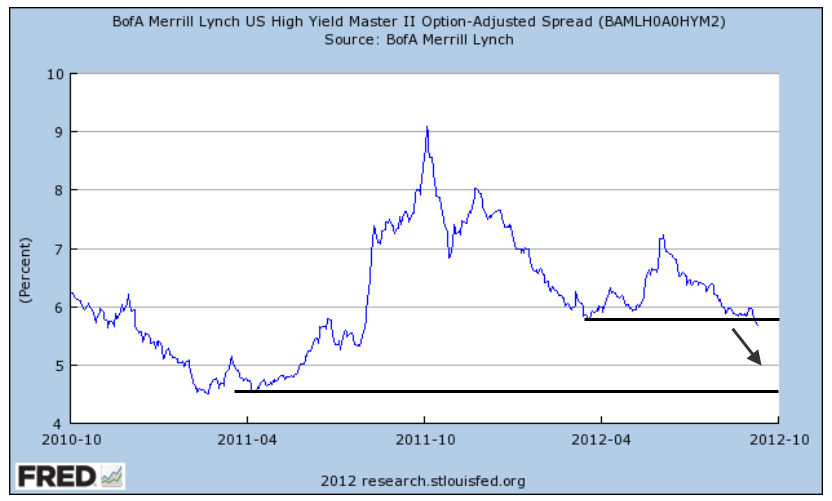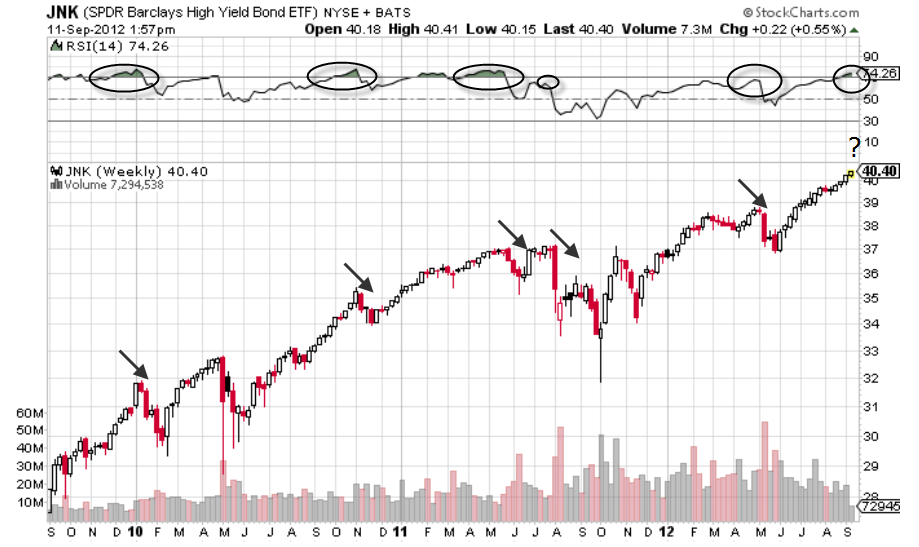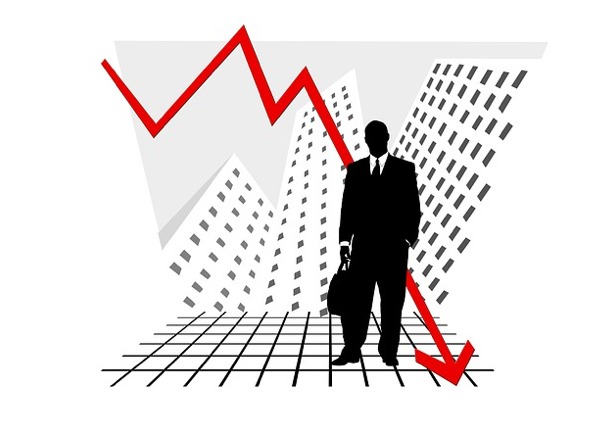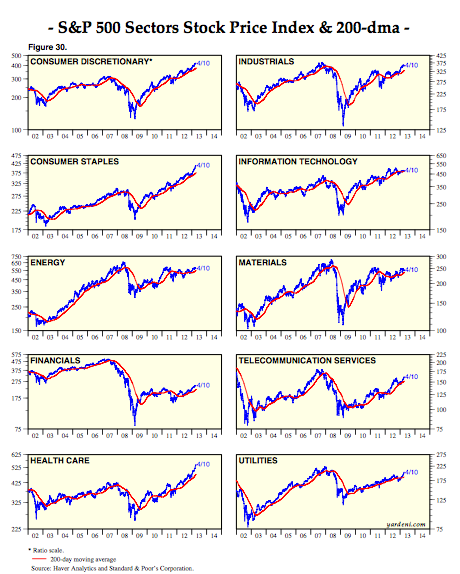by Michael Tarsala, CMT
The downtrend in junk bond yield spreads is a positive for the ongoing U.S. stock rally, although it’s worth keeping an eye on one possible warning sign.
High yield, or “junk” bonds, are closely watched by many stock market analysts. Much like stocks, high-yield bonds are one of the riskier asset classes.
For that reason, junk bonds are a confirming indicator for stocks. Their prices tend to rise and their yields fall when stocks are rising and institutional investors are making risky bets.
Junk bonds can also be a sort of early warning system for stocks. Falling junk bond prices and rising yields amid a stock market rally may reflect that institutions are getting more cautious with their risk-taking and that rising stocks could soon see a trend change.
The picture for one of the most closely watched junk bond indicators in the world is still very positive — especially if you are a stock investor.

Source: St. Louis Fed
Here you see a chart of the Merrill Lynch U.S. High Yield Index. The blue line measures the broad bond index’s yield over a 10-year U.S. Treasury. That spread has reached new year lows in recent days. It now looks as if it has a ways to fall before challenging last year’s lows.
The falling yield spread and the lack of technical resistance on the chart suggest that demand for high yield bonds is increasing and that the trend is unlikely to reverse soon.
There is one caveat, however: One of the most closely traded high-yield ETFs is telling a slightly different story.

Source: Stockcharts.com
Here you see a chart of the SPDR Barclays High Yield ETF (JNK), aka the “junk”. It has a less diverse makeup as the Merill index, but it is worth tracking since it is heavily traded. The chart is a reflection of bond prices (not yields), and it is strongly up and to the right. It too, then, is suggesting that market risk-taking is on the rise.
Yet it has gained so much in recent months that it now may be overbought.
The top of the chart tracks the junk’s RSI, a technical measure of overbought and oversold conditions. You’ll notice that the junk tended to pull each time the RSI reading began to decline from a very high level.
It’s not declining at this point, but it’s now at the point at which where we tend to see price pullbacks.
One interpretation of the two slightly different stories in context is that yes, risk-taking in the long-term is still on the rise.
Yet it’s time to keep a lookout for a possible short-term dip in the JNK — and possibly for stocks as well — within a continued long-term price uptrend.



